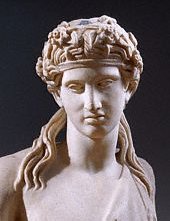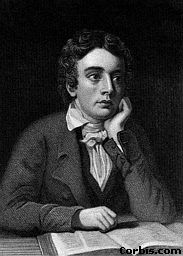![]()
![]()
![]()
|
Palazzo Milzetti |
|
I Miti |
|
Ceres and Bacchus
| The Myth of Ceres Ceres is the Roman name for the Greek goddess Demeter. For the Greeks Ceres was the Mother Goddess of the Earth. Seduced by Zeus she had a daughter from him, Persephone. Persephone happily grew up among the other daughters of Zeus, but being extremely sweet and beautiful her uncle Hades fell in love with her. One day while Persephone was picking flowers, the ground opened and Hades appeared and dragged her down into the Underworld. For nine days and nine nights Ceres wandered around the world with a lighted torch on either hand, looking for her beloved daughter. Only in the tenth day she met Helios, who sees everything, and he was able to tell her what had really happened. Ceres decided to abandon her divine role until her daughter was returned to her. Ceres self imposed exile from the divinities made the Earth sterile, so Zeus ordered Hades to return Persephone. But that was no longer possible. During her stay in the Underworld Persephone had eaten a pomegranate seed which linked her forever to Hades: A compromise was reached by which Ceres would return to Mount Olympus and Persephone would divide the year: half with her mother and the other half in the Underworld. This is why when Persephone leaves the Underworld to be with her mother the Earth blossoms, bringing Spring and Summer to the mortals as a sign of the joy of both deities. When time comes to Persephone to leave her mother for the Underworld, autumn and winter cover the Earth in sign of grieve. She is painted with a white dress and the head covered with flowers and ears of corn , while a cherub offers her some vegetable.
|
 Detail showing Ceres from the Loggia of Cupid and Psyche by Raphael |
| The Myth of
Dionysus Dionysus is the God of vine, his Roman name is Bacchus. Dionysus was born to Zeus and Semele. Hera, of course being jealous, convinced Semele to ask Zeus if she could see him in all his glory. She burned to death at the sight and Hermes saved the unborn baby and sewed it up inside Zeus thigh. Dionysus married Ariadne, whom Theseus left stranded on the island of Naxos. He left pity for her and eventually fell in love with her. When she died, he placed her crown among the stars. He was worshipped by the Centaurs and accompanied by Satyrs and Maenads women who always seemed to be mad with joy.
|

|
| John Keats (
1795-1821 ) Ode to a nightingale 21 Fade far away, dissolve, and quite forget 22 what thou among the leaves hast never known, 23 The weariness, the fever, and the fret 24 Here, where man sit and hear each other groan; 25 Where palsy shakes a few, sad, last gray hairs, 26 Where youth grows pale, and spectre-thin, and dies; 27 Where but to think is to be full of sorrow 28 And leaden-eyed despairs, 29 Where Beauty cannot keep her lustrous eyes, 30 Or new Love pine at them beyond to-morrow 31 Away! away! for I will fly to thee, 32Not charioted by Bacchus and his pards, 33 But on the viewless wings of Poesy, 34 Though the dull brain perplexes and retards: 35 Already with thee! tender is the night, 36 And haply the Queen-Moon is on her throne, 37 Cluster’d around by all her starry Fays; 38 But there is no light, 39 Save what from heaven is with the breezes blown
|
 John Keats |
| Analysis of
the "Ode to a nightingale" An ode is a traditional highly dignified poem divided into rhyming stanzas. It generally implies the use of a solemn, noble style, a direct address to someone or to something and a philosophical or moralizing attitude on the poet’s part. The "Ode to a Nightingale" was composed in the spring of 1819, a few months after the death of tuberculosis of Keats’ brother Tom: in fact there is an allusion to this dramatic event. The theme of the poem is, as in the "Ode to a Grecian urn", the transience of life. Incapable of finding a reconciliation for the contradictions of life, Keats does not accept the transience of all earthly joys with resignation, trying to seize his best moment. On the other hand, he tries to find something which can give the illusion of permanence in a world of flux and change. After having considered an intoxication of wine as a way to forget the world, in these stanzas Keats resorts to poetry for oblivion in the surrounding beauty of the woods. He longs for death, the only means to fix an intense sublime moment for ever and prevent it from changing. According to line 23, life is characterised by "weariness, fever and fret", a common destiny of all men, who "sit and hear each other groan". Keats’ brother’s premature death is evoqued by the words "youth grows pale, and spectre-thin". In line 21 the alliteration in "f" suggests the "unvanished quietness" of the nightingale’ In the forth stanza, especially in lines 31 and 32, poetry becomes the new means to escape from sorrow: the poet now refuses to fly away with the help of wine, embodied by the ancient Greek god Bacchus and his pards. The choice of a myth makes the style more solemn. The words "charioted by Bacchus and his pards" and " the viewless wings of Poesy" suggest the possibility of a world "Where Beauty can keep her lustrous eyes", because classicism is eternal. This stanza opposes to the transience of everything, showed in stanza 3m, the permanence of art: this movement is positive, because it helps the poet to live. In both stanzas we can find the word "away", but with two different implications: in stanza 3 it is an impulse towards death, in stanza 4 it is a vital motion, supported by the power of poetry. The proposition "Tender is the night", alluding to the possibility of flying and overcoming the banality and the transience that make us men, has a strong power of reconciliation with the absolute, the night, the death, the peace. In addition, this statement became the title of a famous novel, written by S. Fitzgerald. The whole ode is grounded on the contrast between the poet’s awareness of the transience of human life and his aspiration to some form of permanence: the poet makes several attempts to escape from the world of pain, death and transience (through wine, poetry, death....), but nothing is able to defeat this sorrow. |
|
Palazzo Milzetti |
|
Inizio pagina |
|